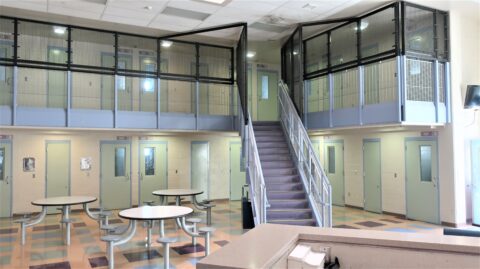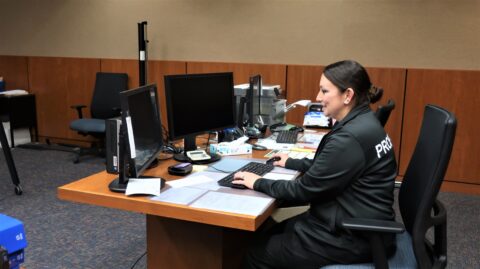Juvenile Services
About Juvenile Services
Types of Probation
 The Welfare and Institutions Code (WIC) are the laws, rules, and regulations pertaining to youth. The prominent difference between the following types of probation is non-wardship vs. wardship. Wardship Probation means that the Court has jurisdiction over youth who commit offenses between ages 12-17. This means the court can take primary responsibility for a youth’s rehabilitation and treatment and may maintain jurisdiction up to the age of 21. In addition, wardship probation allows Probation to remove a youth from their home if necessary.
The Welfare and Institutions Code (WIC) are the laws, rules, and regulations pertaining to youth. The prominent difference between the following types of probation is non-wardship vs. wardship. Wardship Probation means that the Court has jurisdiction over youth who commit offenses between ages 12-17. This means the court can take primary responsibility for a youth’s rehabilitation and treatment and may maintain jurisdiction up to the age of 21. In addition, wardship probation allows Probation to remove a youth from their home if necessary.
- 654 WIC – Informal Probation/Diversion: Probation has determined that the youth may benefit from services. This is a voluntary agreement between the probation officer, the youth, and the parents only. The youth may be placed on informal probation for up to six months. If the youth successfully completes, his/her obligations, the case is closed successfully and sealed. If the youth is unsuccessfully, Probation may make a referral to the District Attorney’s office for a formal petition to the Juvenile Court.
- 654.2 WIC – Informal Probation: The District Attorney’s Office has filed a formal petition with the Juvenile Court. However, the Court has decided that instead of proceeding with the matter, the case is placed on hold to allow the youth to participate in a six-month period of supervision with Probation. The Court or Probation will impose specific terms and conditions that must be followed. If the youth successfully completes the program, the Court will dismiss the pending charges, and the case is closed successfully and sealed. If the youth is unsuccessfully, the Court may reinstate Court proceedings and proceed to disposition of the case.
- 725(a) WIC – Non-Wardship Probation: The Court has determined that the youth violated the law and is placed on probation for a period of six months. The Court imposes a series of terms and conditions that must be followed in order to successfully terminate the probation term. If the youth successfully abides by the terms imposed, the case is then closed successfully and sealed. If the youth is unsuccessful, the Court may impose a higher level of supervision.
- 790 WIC – Deferred Entry of Judgment Probation: The Court determined that the youth committed a felony and places him/her on probation for a period not to exceed 36 months. However, the youth must meet certain criteria before he/she can be placed on this type of probation.
- 602 WIC – Wardship “Formal” Probation: The Court determined that the youth violated the law, declared them a ward of the Court and placed him/her on formal probation under the supervision of the Probation. The Court may maintain jurisdiction of the youth up to the age of 21 years of age. Youth committed to the Secure Youth Treatment Facility may remain a ward of the Court until age 23 or 25 depending on the offense. The Court will require youth to follow a set of terms and conditions that outlines youth responsibilities and the Court’s expectations while on probation supervision. Failure to comply with the terms and conditions may result in the youth being removed from the home.
What to Expect
 Probation uses a validated risk and needs assessment to determine a youth’s likelihood to reoffend. Youth are supervised based on the outcome of the risk and needs assessment and their risk to the community.
Probation uses a validated risk and needs assessment to determine a youth’s likelihood to reoffend. Youth are supervised based on the outcome of the risk and needs assessment and their risk to the community.
Probation Officers use the assessment to develop an individualized case plan for each youth that targets the areas in a youth’s life that are deemed the highest risk to lead to anti-social and criminal behavior. The goal of a case plan includes assisting the youth in making positive life and behavioral changes.
Case plan goals are accomplished by engaging the youth and family and providing referrals to appropriate community-based services. In addition, Probation Officers encourage youth and provide a supportive environment.
The assigned probation officer monitors court compliance, works with the youth and family to develop behavioral change strategies, and reports progress and actions to the Court.
Probation may include visits at the Probation office, at a youth’s home or at school.
Probation grants typically include financial responsibilities, such as victim restitution.
Secure Youth Treatment Facility
On May 14th, 2021, Governor Newsom signed Senate Bill (SB) 823 which closed the Department of Juvenile Justice (DJJ) and shifted funding and responsibility for the highest-need youth to local counties. The legislation provides that this shift is necessary to ensure that youth are closer to their families and receive age-appropriate treatment that is evidence-based and will improve the outcomes of youth and public safety, while also reducing the transfer of youth into the adult criminal justice system. To that end, the legislation provided that intake services at the Department of Juvenile Justice (DJJ) would stop as of July 1, 2021. SB 92 added a new article, Secure Youth Treatment Facilities (SYTF) to the Welfare and Institutions Code setting forth a new dispositional option for juveniles aged 14 and over.
To be considered for an SYTF disposition, a ward must be age 14 or older and the most recent offense for which the ward was adjudicated must be listed in Welfare and Institutions Code Section 707(b). The court must set a baseline term and a maximum time of confinement. The court must review an individual rehabilitation plan for the ward within 30 days of making a commitment to a SYTF. The court must also schedule and hold a progress review hearing for each committed to a SYTF at least every six months. The probation department or the ward may make a motion to transfer the ward from an SYTF to a less restrictive program. The purpose is to facilitate the safe and successful reintegration of the ward into the community.
Youth who are in the SYTF program may participate in ARISE Gang Prevention, Moral Reconation Therapy, Dialectical Behavior Therapy, Anger Management, The Boys and Girls Club, Individual, Family, and Co-Parenting Counseling, Alcohol and Substance Use Treatment Services, Art programs, Equine Therapy, Music, guest speakers, and many other recreation and programming activities.
